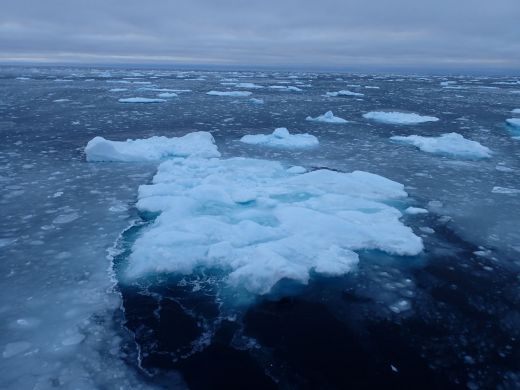
Warming Atlantic water and increasing winter storms work together to reduce sea ice cover near Norway’s Svalbard Archipelago, with the effects potentially extending further into the Arctic region in the future, a new study has found.
, the study looked at why Whalers Bay, north of Norway in the Arctic region, is ice-free in winter despite the negative air temperatures.
“The Arctic is currently undergoing a dramatic transition from thicker, older sea ice to new thinner sea ice, and this new ice is much more sensitive to oceanic and atmospheric events such as storms and warm ocean currents,” said co-author Dr Amelie Meyer from the Institute for Marine and Antarctic Studies at the University of Tasmania.
Led by researchers, the international team combined observations and modelling results to calculate the rate of ice melting necessary to keep Whalers Bay ice‐free, and the amount of heat that must be transferred from the ocean to the ice to sustain such melting.
“We wanted to know the role ocean heat fluxes play in the new thinner Arctic sea ice energy budget, and how fast the ice was melting,” Dr Meyer said.
“There has been a larger winter sea ice loss north of Svalbard than elsewhere in the Arctic Basin, and so the thin and highly variable ice cover in this region was useful for model testing and development.
“The assumption has been that the open water in Whalers Bay is maintained by inflow of warm Atlantic water along Svalbard’s west coast, but this has never been demonstrated quantitatively.
“We found that the warm water from the Atlantic Ocean flowing into that area, combined with storms, was bringing up enough heat to the ocean surface to prevent the sea ice from growing there,” Dr Meyer said.
“But the combination of ocean and storm effects does not only prevent sea ice from forming, it also melts a lot of sea ice drifting in from elsewhere.
“Around 1.5 metres of sea ice is already melting in less than a month in that area, and so potentially if that warm current heats up just a bit, the storms will no longer be needed for the area to be ice free.
“This has implications for the whole Arctic Basin, especially considering Arctic sea ice thickness currently averages at about 1.5 metres.
“As the ocean currents continue to warm due to climate change, we can expect heat from the ocean to melt large areas of ice deeper in the Arctic, where fewer storms take place,” Dr Meyer said.
“And as the ice‐free area increases around Whalers Bay in the future, we will see impacts on air‐sea‐ice fluxes, water mass transformation, marine ecology, sea ice cover, and commercial activity including transportation and fishing.”
The research was funded by the .
Image credit: Amelie Meyer – Norwegian Polar Institute.








